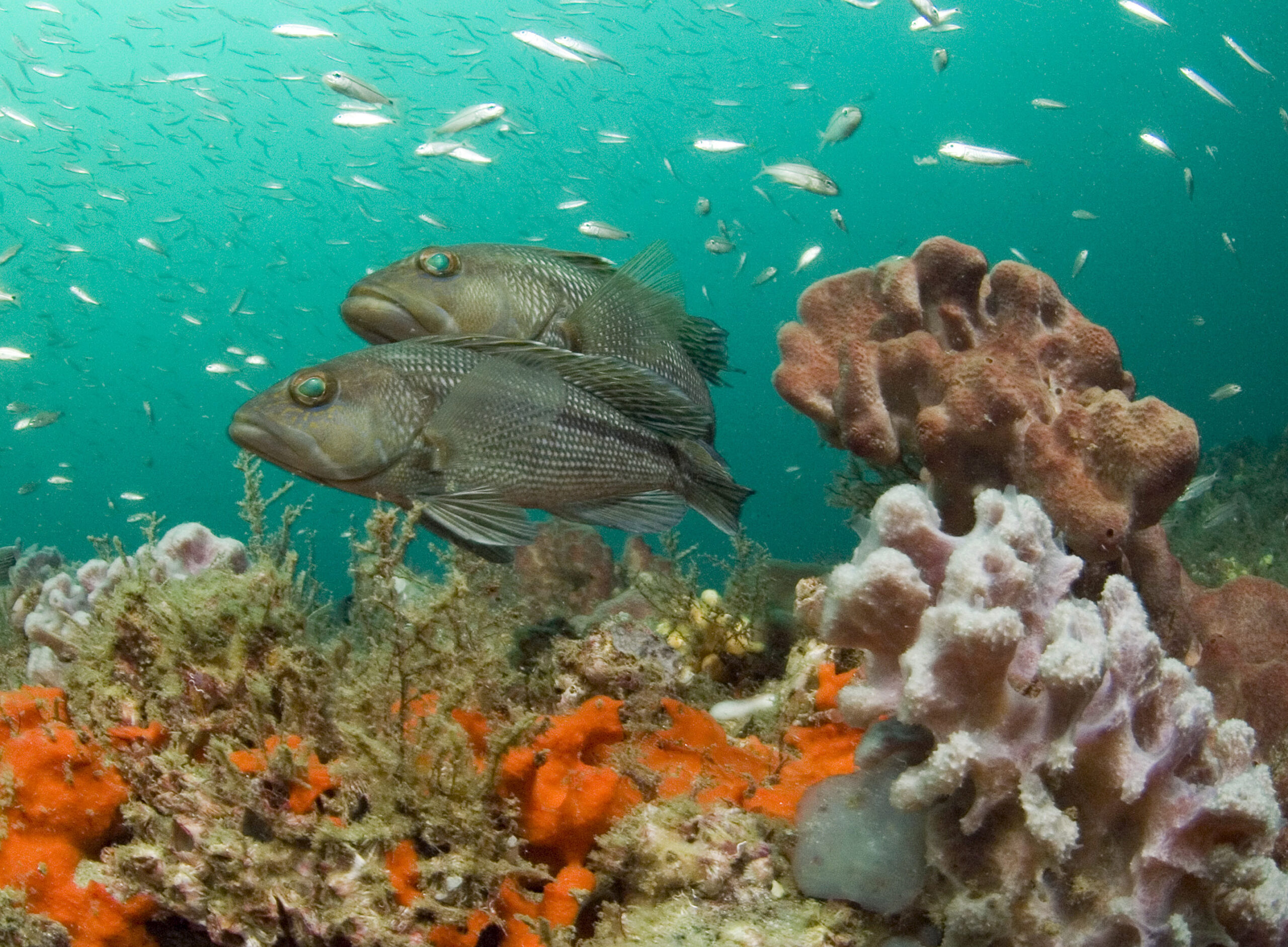There’s A Reef Off Georgia’s Coast, And The Animals There Make A Racket

The sanctuary is named after Milton “Sam” Gray, a biologist who studied it in the 1960s and identified it as an ecosystem worth saving.
Greg McFall / NOAA
Gray’s Reef is just off the coast of Georgia, about 20 miles from Sapelo Island. Like a reef in the Caribbean, it bursts with ocean life, though since it’s in a temperate climate, it has a different mix of animals.
Scientists want to figure out more about what’s going on at Gray’s Reef, and they’re trying a new approach: with sound.
By leaving audio recorders at the reef for a month at a time, a handful of times a year, scientists are getting access to a chorus of underwater animal life at Gray’s Reef. Some of the sounds are identifiable: the squeaks of dolphins; the low, grunting “womps” of oyster toadfish; the incessant crackling of snapping shrimp. Other sounds are a mystery to the researchers.
“This is another way that we get to learn more about Gray’s Reef without having to have divers underwater,” says Gray’s Reef National Marine Sanctuary research coordinator Kimberly Roberson.
Here you see a scene from the bottom of Gray’s Reef and you hear a general soundscape at the reef, with oyster toadfish, snapping shrimp and some mystery sounds. (Photo Credit: Greg McFall for NOAA)
By leaving behind underwater microphones, called hydrophones, researchers can study things that would be much more challenging for divers. For instance, figuring out, what’s Gray’s Reef like at night?
“Does everybody go to bed at 9 p.m.? Absolutely not. Some of our larger, more active sound files have been at night,” says Roberson.
The sound of the researchers’ boat pulling away after the hydrophone was installed. (Photo credit: Greg McFall for NOAA)
The audio research at Gray’s Reef is part of a bigger study on ocean noise conducted by the National Oceanic Atmospheric Administration. There are hydrophones at three other National Marine Sanctuaries, in the Gulf of Mexico, near the Florida Keys and off the coast of Cape Cod. Roberson says the recordings from Gray’s Reef have the most natural sounds out of the four, since the other sanctuaries are close to things like busy shipping lanes, oil and gas development or popular fishing spots.
Hear you see a dolphin in Gray’s Reef and hear their squeaking. (Photo credit: Alison Scott for GRNMS)
Noise in the ocean is a controversial issue lately because the Trump administration is considering allowing offshore oil exploration off nearly all U.S. coasts, including near Gray’s Reef. Just looking for oil and natural gas is loud. There have been studies that show effects from the noise on whales and on tiny plankton.
Roberson says she doesn’t know how oil and gas exploration would affect Gray’s Reef, but this audio research could give scientists more insight into that question.
A nighttime chorus of animals at the reef can be heard here. (Photo Credit: Greg McFall for NOAA)
“We know that fish use noise to communicate, to move about, to express grumpiness like the oyster toadfish. How is that affected by our anthropogenic noise and our potential of growing that anthropogenic noise? I think that the science and these tools are really important in helping us figure that out,” she says.
The low grunting “womp” sound is from an oyster toadfish, also seen here. (Photo credit: Alison Scott for GRNMS)
The hydrophones are also giving the researchers a new view of a place they already know. Todd Recicar, the marine operations manager and vessel captain for the sanctuary, says some of the sounds leave his mind “swirling” as he scrolls through the hours of audio collected at Gray’s Reef.
“I enjoy it so much,” he says. “It’s like my new hobby.”
Audio courtesy of Gray’s Reef National Marine Sanctuary







